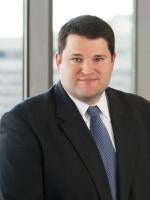We recently blogged about the U.S. Supreme Court’s decision inLawson v. FMR LLC, 571 S. Ct. __, 188 L. Ed. 2d 158 (Mar. 4, 2014), which held that the whistleblower protections in section 1514A applied not only to the direct employees of public companies, but also to employees of private contractors and subcontractors serving public companies. See “Lawson and Doral Expand Whistleblower Protections,” SECurities Law Perspectives (Apr. 2, 2014). Taking the lead from Lawson and more recent decisions from the Department of Labor’s Administrative Review Board (“ARB”), the U.S. District Court for the Eastern District of Pennsylvania has ruled that an employee of a nonpublic subsidiary of a public issuer could proceed with his retaliation claims against the company. Wiest v. Lynch, __ F. Supp. 2d __, Civil Action No. 10-3288, 2014 WL 1490250, at *18–23 (E.D. Pa. Apr. 16, 2014).
In reaching this conclusion, the court considered Lawson and more recent ARB decisions interpreting the scope of section 1514A’s “agent” language. The court said, “There is no reason to think that the Supreme Court’s holding in Lawson does not also apply, beyond contractors of public companies, to agents of public companies and those agents’ employees.” Id. at *19; see also 18 U.S.C. § 1514A(a) (“No [public] company . . . or any officer, employee, contractor, subcontractor, or agent of such company, may discharge, demote, suspend, threaten, harass, or in any other manner discriminate against an employee in the terms and conditions of employment because of any lawful act done by the employee . . . to provide information, cause information to be provided, or otherwise assist in an investigation regarding any conduct which the employee reasonably believes constitutes a violation of section 1341, 1343, 1344, or 1348, any rule or regulation of the Securities and Exchange Commission, or any provision of Federal law relating to fraud against shareholders . . . .” (emphasis added)).
Noting “some disagreement among lower courts and the ARB as to the scope or nature of the required agency relationship,” the court rejected the narrower view—i.e., that an agency is created for purposes of section 1514A only when the public-issuer parent is involved in hiring, supervising, or terminating its nonpublic subsidiary’s employees—for more traditional agency principles. The court found persuasive the ARB’s decision in Johnson v. Siemens Building Techs., Inc., ARB No. 08-032, 2011 WL 1247202 (Dep’t of Labor Mar. 31, 2011), which held that section 1514A applied to a subsidiary whose financial information was included in the consolidated financial statements of a public-issuer parent.
In combination with Lawson, the Wiest court found the concurrence inJohnson suggestive of “the direction in which the ARB is headed.”Wiest, 2014 WL 1490250, at *20. Specifically, the concurrence observed that to focus the agency coverage question on whether the public issuer was involved in employment/labor law issues would “fly in the face” of two other bases for finding agency—i.e., apparent authority and respondeat superior. Id. at *20–21 (quoting Johnson, 2011 WL 1247202, at *16). Rather, it explained, “[A]n entity will be held independently liable as a covered agent under [section 1514A] where it is established that the entity engaged in retaliatory conduct was serving as the public company’s agent with respect to securities related matters.” Id. at *21 (quoting Wiest, 2011 WL 1247202, at *17).
In resolving the motion to dismiss before it, the Wiest court concluded that the complaint sufficiently alleged that Wiest’s employer, the nonpublic subsidiary, acted as an agent of its public-issuer parent. For example, the court found Wiest’s allegation that executives of the public-issuer parent had approved certain expenses about which Wiest had complained to be “a strong indicator of an agency relationship regarding accounting and taxes between [the two entities].” 2014 WL 1490250, at *22. The court noted, however, that “[t]his theory will quite likely be tested on the evidence later . . . .” Id. at *23.
While Lawson opened the door for employees of nonpublic companies to bring whistleblower claims, there still will be legal challenges to the scope of such protections. The Wiest decision highlights at least one area about which there may be substantial disagreement and on which companies may fight back on the courts’ expansion of these claims.



 i
i


